What to see in Egypt in 7 days? Check out these amazing places!
- Destination Explorer
- Nov 18, 2024
- 7 min read
Updated: Jun 10

Egypt—a land of timeless pyramids, expansive deserts, and the storied Nile River. Our 7-day adventure took us from bustling Cairo to the ancient wonders of Giza and Sakkara, followed by a tranquil 4-day Nile cruise from Aswan to Luxor. Along the way, we explored grand temples, savored local flavors, and marveled at art and architecture that has endured for millennia.
If you’re planning a trip to Egypt, this itinerary will guide you through the highlights of a truly unforgettable experience.
This 7-day Egypt itinerary was created in collaboration with iegypt
Day 1: Giza and Saqqara:

We started our journey in Caïro, arriving early at Steigenberger Pyramids, a highly recommended hotel close to Giza with excellent pyramids views, especially at night when they are illuminated.
Start your 7-day Egypt itinerary in Caïro with visits to the Giza pyramids and Saqqara pyramids, two of Egypt's most iconic landmarks.
The pyramids you can observe here are more than 4500 years old. The construction of these pyramids remains a mystery. Each stone block is massive, standing over a meter high. These ancient monuments are the oldest manmade structures in the world.
Travel Tip: Arrive early to avoid crowds and the heat, as the platform has almost no shade.
For a unique perspective, explore the 9 pyramids by camel. With an additional entrance ticket, you can visit the tombs inside—though keep in mind the narrow, dark corridors are not suitable for those with claustrophobia. Book a guided tour here.

The Great Sphinx, the largest sphinx statue in the world, is nearby. The broken nose of this enigmatic statue has inspired various theories, including the belief that it was damaged deliberately to prevent the pharaoh’s soul from reentering the statue.
We also visited Sakkara, home to the Step Pyramid of Djoser, the world’s oldest surviving pyramid. The site is still an active archaeological area where treasures are uncovered daily. Inside the tombs near the Step Pyramid, we marveled at well-preserved hieroglyphics depicting daily life from almost 5,000 years ago. A guided tour is highly recommended for deeper insights.Check out our recommended options here.
Day 2: Aswan and Nubian village
Egypt in 7 days: Nile cruise highlights
A Nile cruise is one of the best ways to explore ancient Egypt. For our 7-day trip, we chose a 4-day cruise from Aswan to Luxor. Domestic flights from Cairo to Aswan are convenient, taking about 90 minutes.
After boarding the cruise, we visited Philae tempel, relocated from Philae Island to Agilkia Island due to flooding. The intricate carvings on the temple walls depict Egyptian mythology, including the story of Isis, Osiris, and Horus.
Next, we explored the Nubian village, one of the most colorful places in Egypt. Arriving in the late afternoon allowed us to enjoy a stunning sunset over the village. Stroll through vibrant streets lined with unique souvenirs and local spices. Don’t miss Soma Kato, where you can visit a traditional Nubian house and savor a refreshing hibiscus tea.
Day 3: Abu Simbel and Kom Ombo

Abu Simbel is a must-visit from Aswan. While flights are available, a private car tour is more cost-effective and allows for more time to explore. Another option is cruising along Lake Nasser to witness Abu Simbel at sunset, when it’s beautifully illuminated.
Check out more here.
Built by Ramses II, Abu Simbel features a biannual solar alignment phenomenon, where sunlight illuminates the inner sanctum statues on February 22 and October 22, drawing visitors from around the world.
Returning to Aswan, our cruise sailed toward Kom Ombo temple, an unusual double temple dedicated to Sobek (crocodile god) and Horus (falcon god). Key features include:
the Nilometer: used to measure the Nile’s water levels.
Mummified crocodiles, considered sacred to Sobek.
Ancient hieroglyphics showcasing Egypt’s numerical system.
DAY 4: Edfu and Luxor

An early morning TukTuk ride took us to Edfu Temple, one of the best-preserved temples in Egypt. The temple, dedicated to Horus, features a 35-meter-high entrance gate flanked by statues of falcons. Inside, pillars intricately carved with hieroglyphics tell the story of Horus.
Travel Tip: The TukTuk ride through Edfu’s bustling streets is an adventure itself, weaving around pedestrians, carts, and donkeys.

During lunch, we passed through the Esna Lock, a fascinating experience where local merchants in boats tossed souvenirs onto our cruise deck, hoping for sales.
Arriving in Luxor by evening, we visited Luxor Temple and the 2.7 km Sphinx Avenue. Watching the sunset over the temple and its night-time illumination was magical.
Day 5: Karnak temple and Valley of the Kings
We started with a hot air balloon ride over the West Bank of Luxor, offering breathtaking views of ancient monuments. This is highly recommended, going up with around 40 colorful balloons watching the ancient Egyptian monuments is a must do experience, book it here.
After breakfast we visited the temple of Karnak. This complex is the largest religious structure ever built in the world. It covers approximately 200 acres.
A visit to the Valley of the Kings, the temple of Hatshepsut and the colossi of Memnon are definitely some highlights on your Egypt travel itinerary.
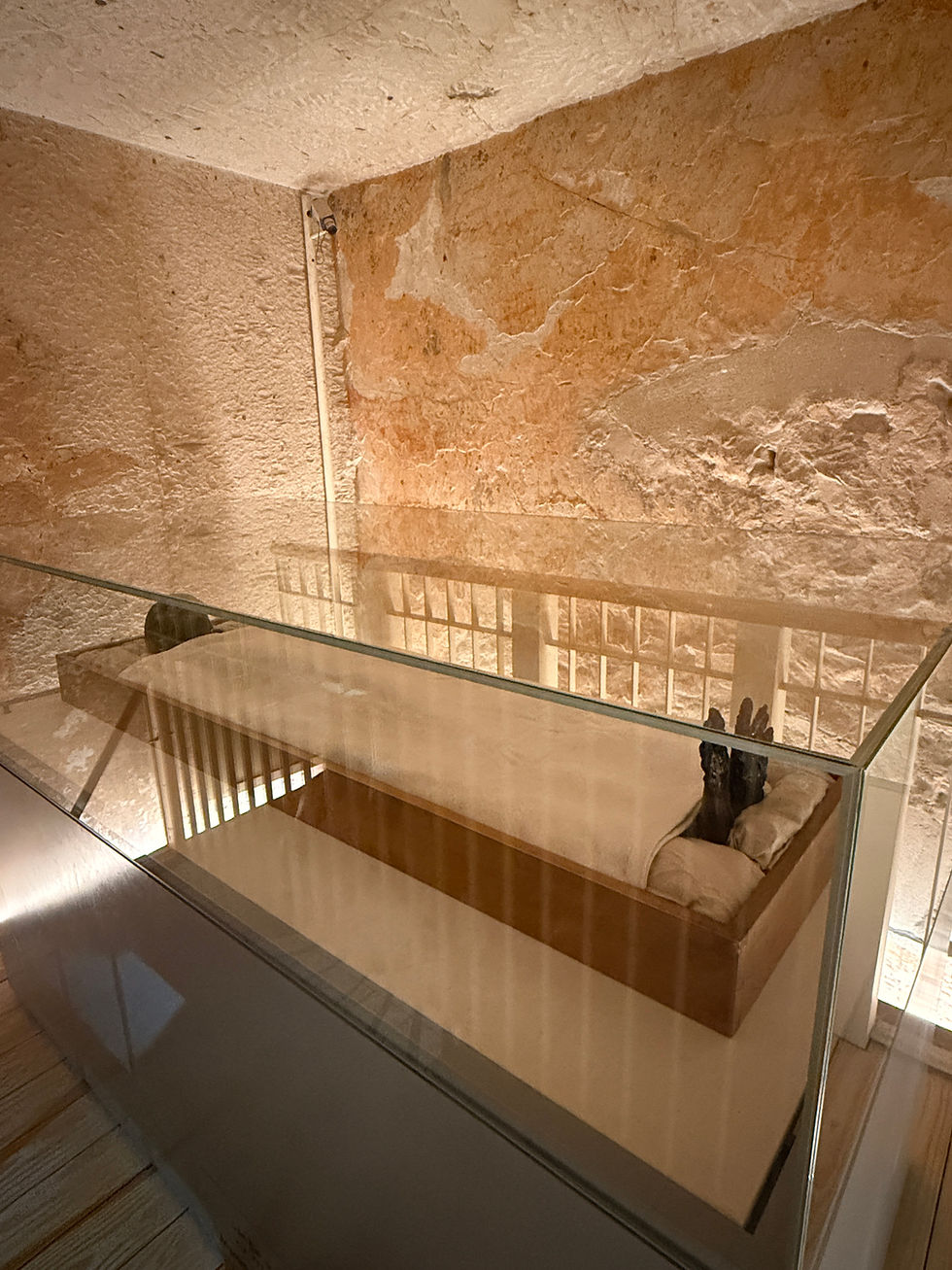
The Valley of the kings is the graveyard of ancient Egypt with over 60 tombs of the greatest pharaohs. In the general ticket you can visit 3 tombs that are open at the time of your visit. Tombs open at different times to help preserve them as the sunlight can fade the colors of the hieroglyphics on the walls. If you want to visit the tomb of Tutankhamun you need to pay a little extra (500 EGP). Guides are not allowed to enter the tombs.
TIP: Photography with cell phones is free, but cameras require a photo pass.
The Colossi of Memnon are two massive statues of around 18 meters high, carved out of one massive block of sandstone. Within the 3400 years of time they have been battered by wind, sun and water. So you can imagine they got some damage as a result, but still worth a quick stop as you will pass them along the road to the Valley of the kings.
the Temple of Hatshepsut is a must see in Luxor, queen Hatshepsut was the first female pharaoh in history of Egypt. The temple is set against a desert rocky background, near the Valley of the Kings. With the long stairs going upwards to the second level of the temple, this one is really impressive and demonstrates the amazing architectural skills in ancient Egypt.
Day 6: Exploring Cairo's treasures
After a short flight from Luxor (ca.45 minutes) we arrived back in Caïro. We spend the night at Grand Nile Tower Hilton Hotel and from our room we had an excellent view on the Nile.

Besides visiting Giza and Saqqara a visit to Caïro should be on your Egypt itinerary as well. These are 7 best things to do:
The Egyptian Museum
Although the new Grand Egyptian museum recently opened on 16th of October 2024, it's still worth visiting the Egyptian Museum in the center of Caïro. The treasures of the pharaoh Tutankhamun can be seen here and an amazing collection of ancient Egyptian artifacts. Visiting this museum will take at least 2 hours. An entrance ticket costs 450 EGP. You can buy an entrance ticket here.
National Museum of Egyptian Civilization
The crown jewel of this museum is the Royal Mummies' Hall which displays the mummies of the ancient 17 Kings and 3 Queens of Egypt. When you walk around this extraordinary collection you get the feeling of strolling down the Valley of the Kings, where most of these mummies were originally resting. The entrance ticket costs 500EGP.
The Grand Egyptian Museum
This museum just recently opened and is the world's largest museum dedicated to a single civilization. The treasures of king Tut (Tutankhamun) will be moved to the new museum in the near future as well as some other ancient artifacts as this new museum will display around 100.000 artifacts spanning 7000 years of Egyptian history.
Citadel of Salah El Din and Muhammed Ali Mosque

A visit to the Saladin Citadel is an experience to add to your Caïro itinerary. Two impressive mosques to visit (don't forget to put out your shoes, before entering):
The mosque of Sultan alNasir Muhammad was the royal mosque during the Mamluk Period. The open court is surrounded by four porticos. The ceiling is decorated with wooden geometric shapes, inlaid with ivory and mother-of-pearl. Unfortunately most of these have been stolen during the British occupation when the mosque was used as a prison and storage.
The mosque of Muhammed Ali also known as the 'Alabaster Mosque' referring to the marble paneling on its interior and exterior walls. The twin minarets are the highest in Egypt (around 84 meters).
Inside you can take some amazing pictures as there are many chandeliers and lights.

At the citadel you have an amazing view overlooking the entire city.
The Hanging church

As this church has been built upon the remains of an old Roman fortress (literally standing on the old pillars) it got the name of 'Hanging Church'. This Roman church is still in use and has some beautiful ornaments and mosaic paintings. Only about 10% of the population in Egypt is Christian, mostly Coptic.
Church of Saint Sergius and Bacchus
This church has acquired a special religious status among Coptic churches because it is associated with the Holy Family's journey through Egypt. Especially the underground cave (sanctuary) where the Holy Family would have resided during their time in Egypt.
Have a typical Egyptian meal: Koshari

As for Egyptian food I would highly recommend the lentil soup, Baba Ganoush and Hummus. But one of most typical Egyptian dishes is Koshari. It's made of lentils, macaroni & rice topped with tomato sauce and fried onions. One of the best places to try this traditional food is at Koshary Abo Tarek in Caïro.
Planning your own trip? Save this itinerary for later!
Don't miss our FAQs for Egypt travel here.
*Disclaimer: This post contains affiliated links which means that purchases made through these links reward Destination Explorer a small commission without any additional charge for the purchaser.






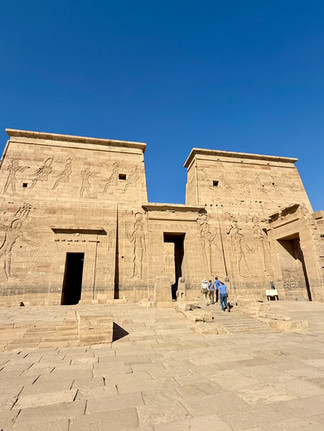

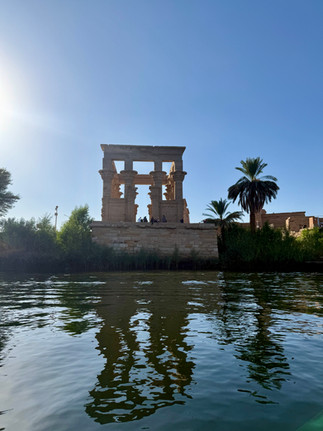

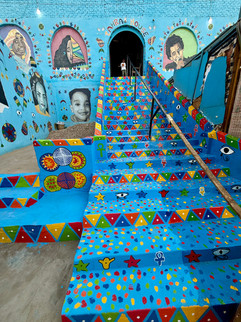



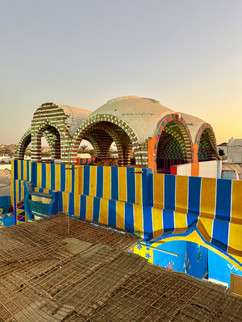







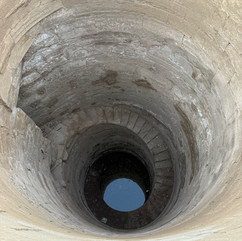









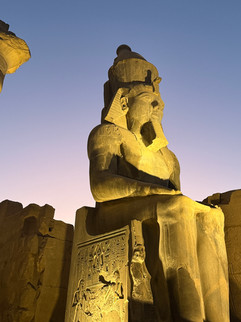









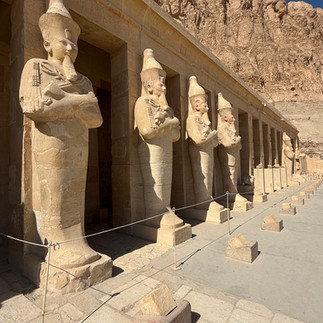














Comments